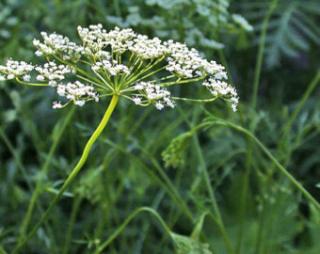Blog
Seed Spices: My Latest Obsession (Part 1 of 4)
I have been obsessed with seed spices as far as I can remember. My mother, who hails from the North East mountains of India always had the most amazing variety of seed spices in her kitchen. There was never a meal without one or the other, a combination, toasted, roasted, ground, sprinkled or eaten as is. The leaves and stems of these seed spices were a regular feature in many dishes cooked at home. Growing up, I was naturally drawn to seed spices and to this day, use them and their plants in my cooking.
Recently I have been focused on using all kinds of seed spices in my cooking and have found myself in many discussions about these wonderful ingredients with customers and friends. I have to share these stories with you all, hence, I decided to start this 4-part in depth blog focusing mainly on seed spices.
Seed spices came to India from the Mediterranean region and Central Asia a very long time ago, which soon became a part of India – the land of spices. Seed spices are seeds of herbs and plants that are harvested and dried to be made available all year round. They are handled with care to avoid contamination and their properties are preserved not only for taste and flavour but also to provide the most amazing health benefits. The plant of these seed spices are used in many dishes as a flavour and taste enhancer, each giving their own unique aroma and pungency.
The main seed spices are Anise, Coriander, Carom, Cumin, Caraway, Celery, Dill, Fennel, Fenugreek, Mustard, and Nigella. For this blog entry, I will cover anise and fennel in this section as they are similar yet different – which sometimes creates confusion.
Anise
The seeds of this plant is usually the only part used in cooking. It has a similar taste to fennel and come from the same botanical family – Apiaceae.
Another variety is called star-anise, which comes from a different plant family (Illiciaceae) where the star-like shape is the actual pod which carries the seeds of the star anise. The pod or fruit is harvested before it ripens, and then dried. Star anise is commonly used in China and Asia, and is a part of the famous Chinese Five Spice Mix.
Anise helps in the relief of coughs, colds, asthma and bronchitis, and improves memory. This seed spice is also used as a digestive aid, mouth freshener, and assists in the production of milk in lactating mothers.
Please click HERE for a Roast 5 Spice Duck with Kumquat Marmalade recipe featuring Star Anise!
Fennel
Because fennel and anise tastes and look quite alike, many people get confused by their actual properties. If you see a plant referred to as anise and is shaped like a bulb, then it is probably fennel. They do taste similar but it is only anise seeds that are edible and consumed whereas fennel seeds as well as the whole plant is used in many culinary dishes.
Fennel is known to improve eyesight, aid digestion, reduce gas and bloating, and help with obesity. It is also used as a mouth freshener and an after meal digestive.
Because the entire fennel plant can be consumed, it makes for a more versatile ingredient and is used in numerous recipes. It is eaten raw or cooked, great in salads and soups, and many other recipes especially during the fall when this plant is in-season. I love to roast fennel and use it as a side or a topping for a salad. I simply cut off the tops and hard bottom and cut the bulb in half length wise. Then I cut 1 inch slices sideways. After I toss in some cold pressed oil (usually olive oil, coconut oil, or ghee, salt, and pepper, I bake them in the oven for 20-30 minutes on one side and the same on the other. Viola! A tasty, zesty addition to a salad or a side for a main meal is ready!
Punam Chopra
Founder and Health Coach, SpiceBox Organics





